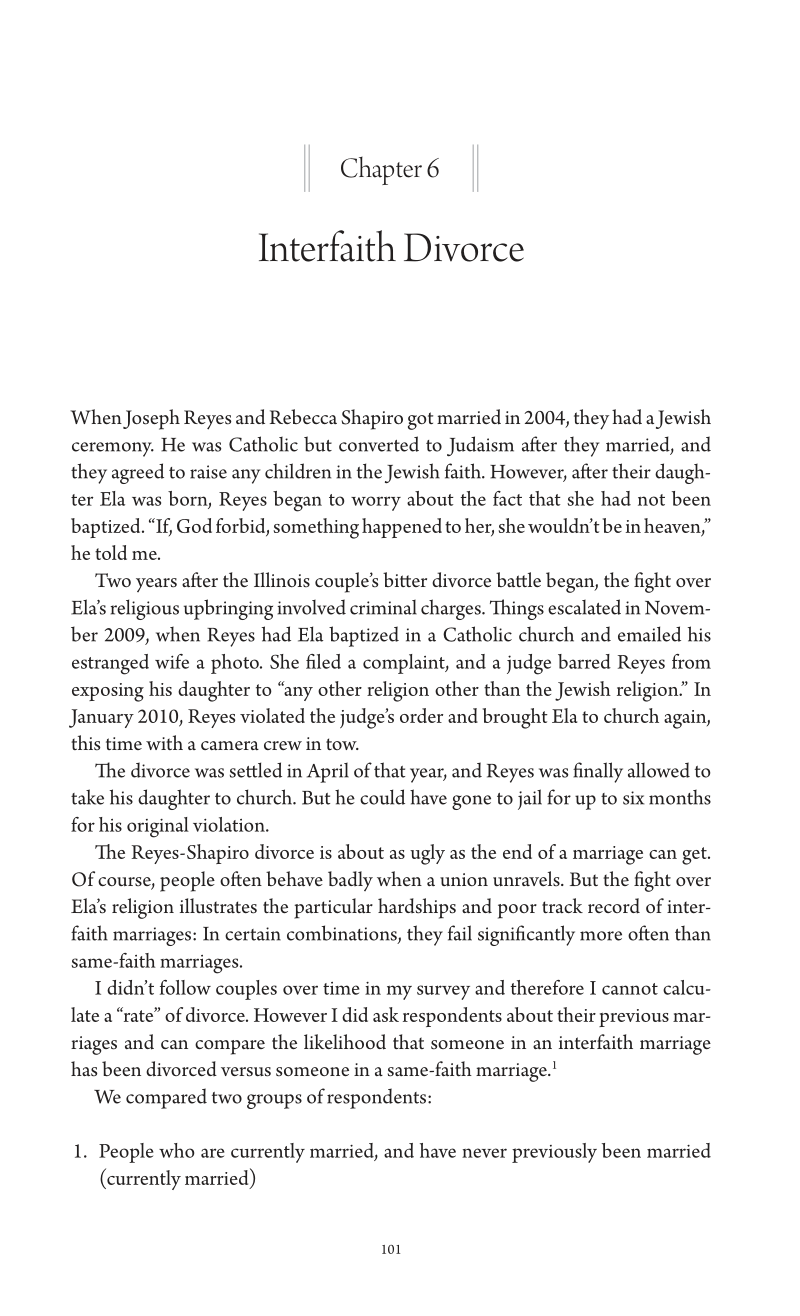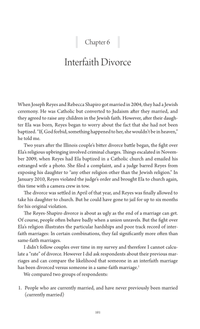Naomi Schaefer Riley reviews data on interfaith divorce and marital satisfaction, including Mormons.
- Type
- Book
- Source
- Naomi Schaefer Riley Non-LDS
- Hearsay
- Secondary
- Reference
Naomi Schaefer Riley, 'Til Faith Do Us Part: The Rise of Interfaith Marriage and the Future of American Religion, Family, and Society (New York: Oxford University Press, 2013), 102-103, 107, 121
- Scribe/Publisher
- Oxford University Press
- People
- Naomi Schaefer Riley
- Audience
- Reading Public
- Transcription
In general, Catholics are no more likely to divorce when married to someone of the same faith than when married to a non-Catholic. However, divorce is roughly ten percentage points more common among Catholics who marry evangelicals. Indeed, evangelicals are more likely to divorce when married to someone of almost any other religion. While roughly a third (32 percent) of all evangelicals’ marriages end up in divorce, that climbs to nearly half (48 percent) for marriages between evangelicals and non-evangelicals. It is especially high for evangelicals married to someone with no religion (a “none”)—61 percent. Mainline Protestants look a lot like Catholics, in that their frequency of divorce is about the same for same-faith as interfaith marriages. However, the frequency is substantially higher for mainline Protestants married to nones (63 percent). There are very few cases of mainline Protestants married to evangelicals, which is likely because, in the eyes of most Protestants, such intra-Protestant marriages are same-faith rather than interfaith. With a relatively small number of Jews in the sample (44), their inclusion here is tenuous. With the caveat that these numbers are based on a very small sample, it is nonetheless striking that the frequency of divorce more than doubles for marriages between a Jew and a non-Jew (35 percent vs. 16 percent).
People with no religious affiliation are outliers, as there is a greater frequency of divorce among Nones married to Nones than Nones married to religious people. Before making too much of this surprising finding, however, it is important to note that we do not know much about former spouses from our survey. We do not know whether these “non-None” spouses are actually “nones-in-disguise.” In other words, some proportion of spouses who are described as having a religious affiliation might not be religious in practice, meaning that they are essentially Nones.
. . . . According to calculations based on the 2001 American Religious Identification Survey, a survey of more than 35,000, people who had been in mixed-religion marriages were three times more likely to be divorced or separated than those who were in same-faith marriages.
. . . .The finding on Mormon marital satisfaction rates might raise some eyebrows since, as a group, members of the LDS church tend, like evangelicals and Black Protestants, both to have a more exclusive view of faith and a high level of involvement in their religious communities. Why is there only a .5 point disparity between Mormons in same-faith and interfaith marriages?
The best explanation I found was contained in the attitudes of those Mormons I interviewed toward their non-Mormon partners. The Mormons I was able to find who are in interfaith marriages seemed to have a sense that God would ultimately take care of their partners.
. . . .
[Table 6.3]
- Source Link
- https://global.oup.com/academic/product/til-faith-do-us-part-9780199873746?cc=us&lang=en&
- Citations in Mormonr Qnas
The B. H. Roberts Foundation is not owned by, operated by, or affiliated with the Church of Jesus Christ of Latter-day Saints.


